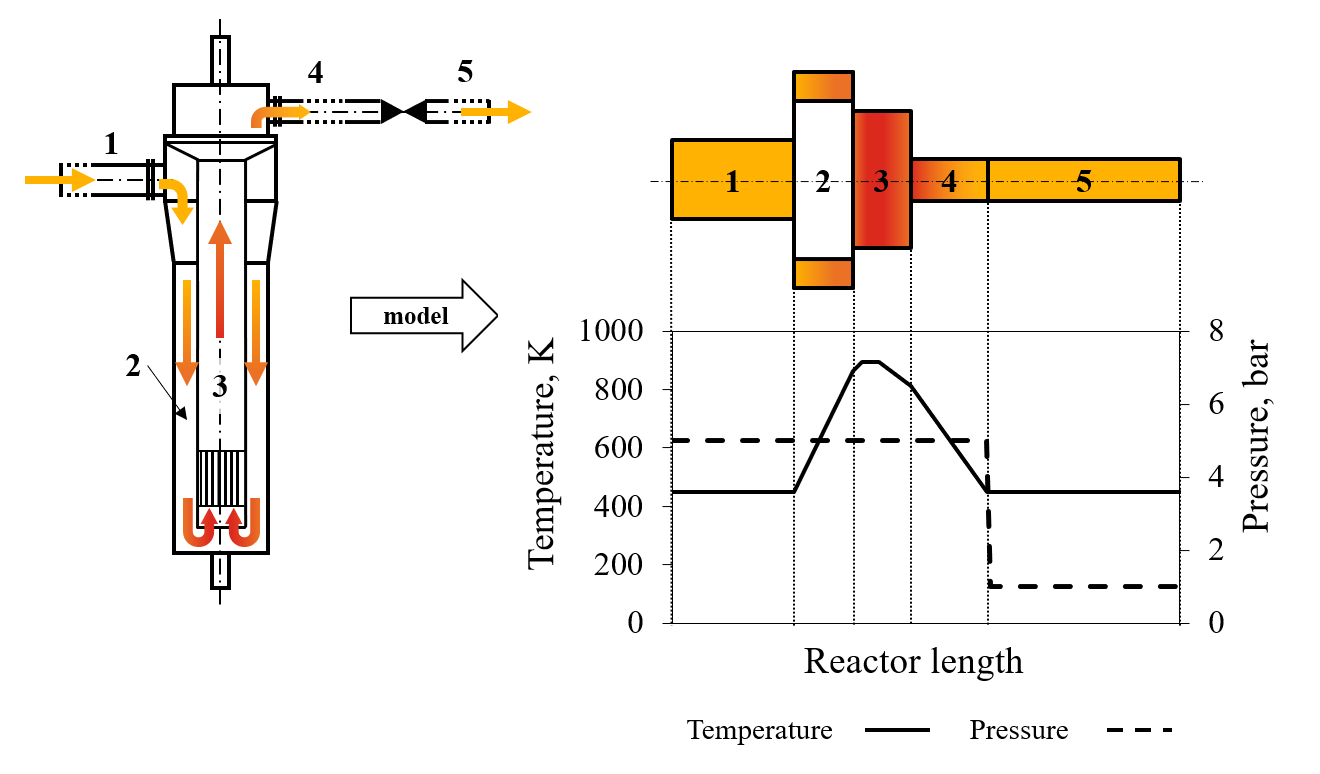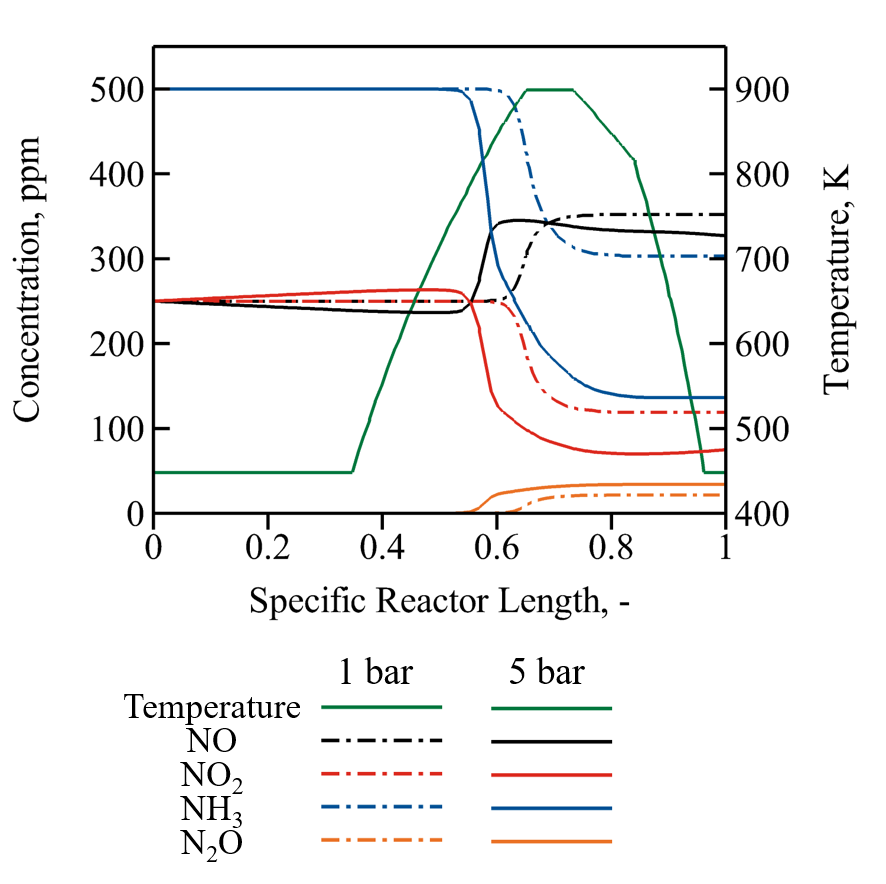Gas phase reactions in diesel exhaust tract
Background:
To meet the increasingly stringent emission standards, diesel vehicles currently mainly use a urea SCR (selective catalytic reduction) system for reduction of nitric oxides (NOx). The precursor of the reducing agent is dosed into the exhaust pipe before the catalytic converter in the form of urea-water solution (commercial name AdBlue). The urea decomposes to the reducing agent ammonia (NH3) and to isocyanic acid (HNCO) in the hot exhaust gas. For optimal NOx conversion at the so-called fast SCR conditions in the catalytic converter, the 1:1 ratio for NO/NO2 and NH3/NOx is required. In diesel exhaust gas aftertreatment systems, the NO2 amount is adjusted in the diesel oxidation catalyst, and according to the NOx concentration in the exhaust gas, the urea-water solution is dosed in front of the SCR catalyst. The increase of engine efficiency has led to a decrease of exhaust gas temperature, consequently the catalytic converters have been positioned closer to the engine to ensure the required temperature for catalytic converters. In addition, pre-turbine SCR is frequently used, in which the catalytic converter is positioned in front of the turbo charger. The increased temperature and pressure under pre-turbine conditions and the presence of NO2 in the gas mixture bear the potential for non-negligible amounts of NOx conversion or other reactions in the gas-phase. A possible change of the NO/NO2 and NH3/NOx ratios, as well as HNCO reactions in the exhaust pipe before the catalytic converter can lead to lower efficiency in the catalytic converter causing ammonia slip or NOx emission. HNCO reactions are also important because of the significant role of HNCO in formation of urea deposits.

Project:
In the current research, reactions of NH3 with NOx and HNCO with NOx are investigated, focused on the effect of pressure (pre-turbine conditions) and on the effect of NO2 in the gas mixture (Figure 2). For a better understanding of the chemical processes occurring, experiments are carried out and simulated with already published detailed reaction mechanisms (Figure 1). The development of a gas phase mechanism for HNCO reactions in the gas phase, relevant to diesel exhaust mixing is also part of the work. By analyzing the reaction paths, correlations in the reaction system of the gas mixture from the exhaust tract are also identified and explained.

Figure 2: Simulated concentration profile along the reactor tube at 1 and 5 bar, 923 K reactor temperature, volume flow 12.6 L/min. Gas feed: 500 ppm NH3, 250 ppm NO, 250 ppm NO2, 10% O2, 5% H2O in nitrogen. [1]
Contact: Anna Bertótiné Abai, Dr. Marion Börnhorst, Prof. Dr. Olaf Deutschmann
Funding:

Publications:
1. Bertótiné Abai, A., Zengel, D., Janzer, C., Maier, L. et al., "Effect of NO2 on Gas-Phase
Reactions in lean NOx/NH3/O2/H2O Mixtures at Conditions Relevant for Exhaust Gas
Aftertreatment," SAE Technical Papers 2021, doi:10.4271/2021-01-5005.
